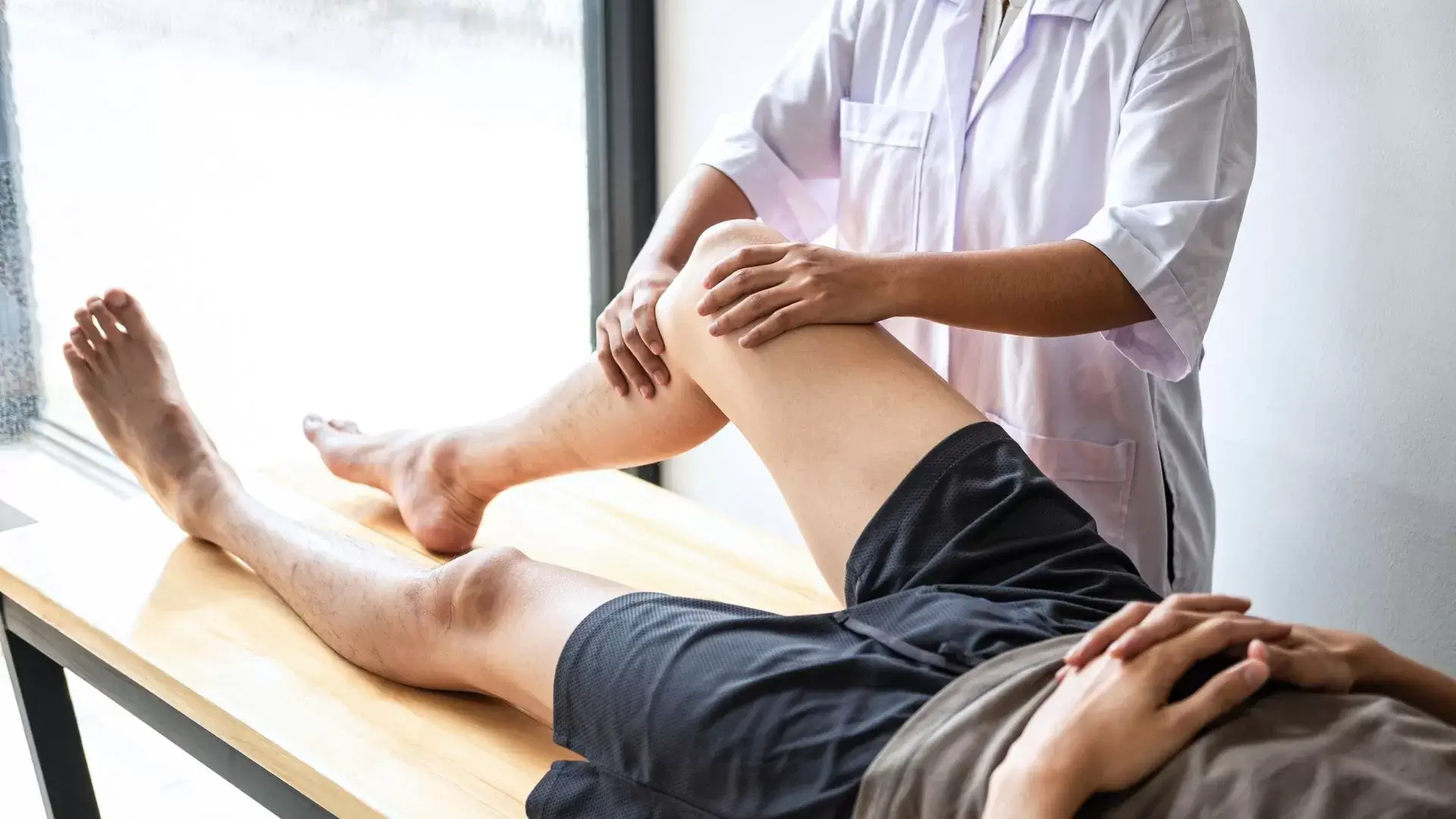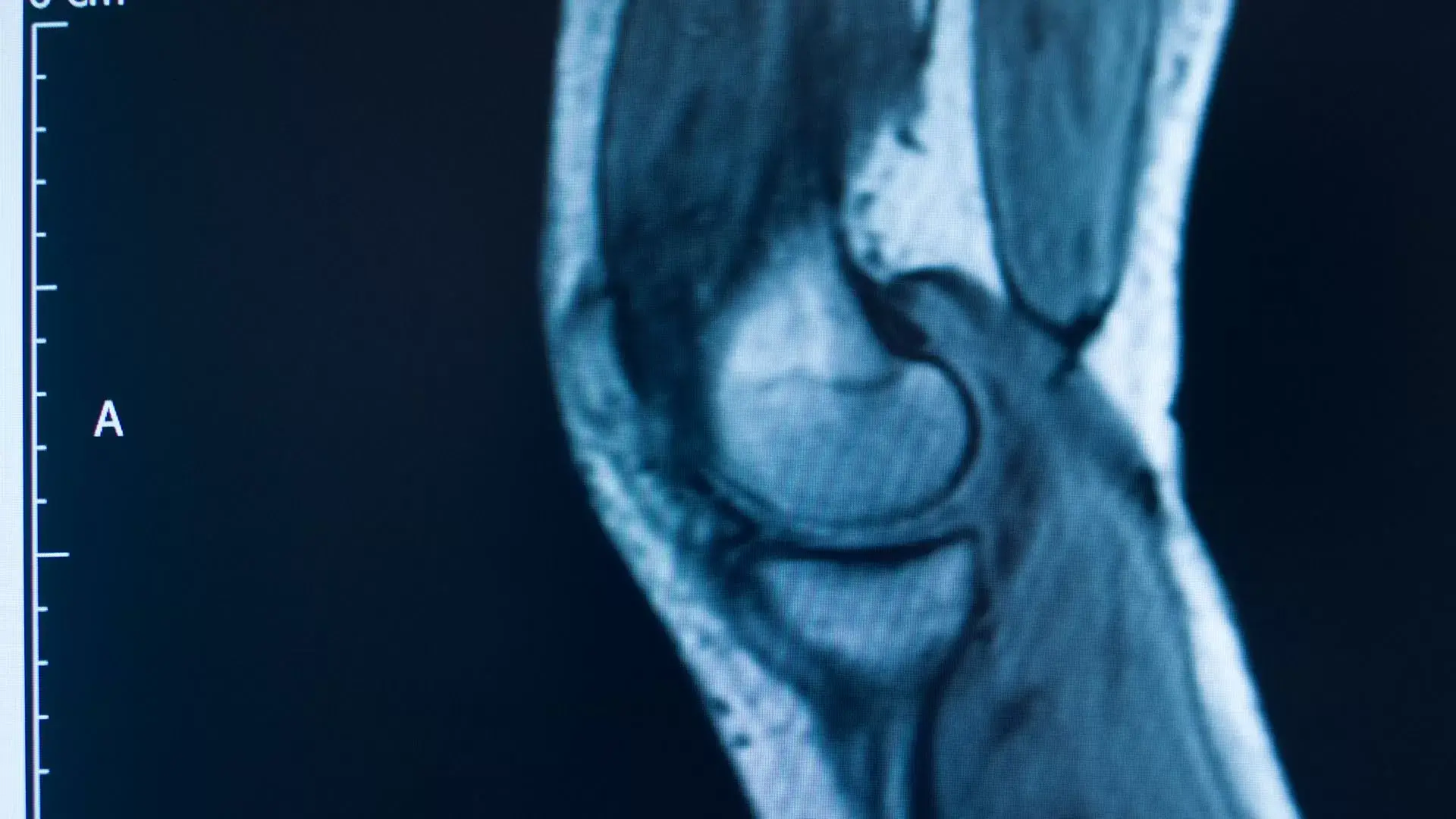We recognize that finding the right chiropractor for limb injuries is essential for recovery. Chiropractic care effectively promotes healing and restores mobility through tailored treatments such as adjustments and soft tissue therapy. We focus on managing pain and inflammation, ensuring that rehabilitation plans are personalized to your needs. Whether it’s a sprain, strain, or overuse injury, our extensive approach involves accurate diagnosis and ongoing assessments to guide your recovery. We encourage you to explore more about how our services can enhance your healing journey and prevent future injuries.

At Physio Chiro Clinic, we specialize in providing evidence-based physiotherapy and chiropractic services tailored to effectively address and rehabilitate limb injuries. We recognize that limb injuries, such as sprains, strains, and soft tissue injuries, can greatly impact your daily life and mobility. Our dedicated team focuses on personalized rehabilitation plans designed to enhance your recovery process.
We take a thorough approach to pain management, recognizing that each patient’s needs are unique. By utilizing a combination of physiotherapy techniques and chiropractic adjustments, we aim to restore your range of motion and alleviate discomfort. Our goal is to not only address the immediate symptoms but also to promote long-term healing and prevent future orthopedic injuries.
In our sessions, we emphasize restoring mobility and strength, guiding you through exercises tailored to your specific injury. We monitor your progress closely, adjusting our methods as necessary to guarantee ideal results. Through this patient-centered approach, we empower you to take an active role in your rehabilitation journey. Together, we can work towards reclaiming your active lifestyle and enhancing your overall well-being after experiencing a limb injury.
Limb injuries can arise from various activities and circumstances, with common types including sprains, strains, fractures, and tendon injuries. Whether we’re participating in sports or engaging in everyday tasks, we might experience injuries like a broken bone or a dislocation. One common injury we see is a ligament tear, often resulting from sudden twists or falls. Sports injuries frequently lead to muscle tears or tendon injuries, causing significant joint pain and limiting our mobility.
Overuse injuries, such as stress fractures, develop gradually due to repetitive activity, often affecting runners or athletes who push their limits. Strains and sprains, on the other hand, involve overstretching or tearing muscles and ligaments, which can happen during sudden movements or accidents.
Understanding these types of injuries helps us identify symptoms early and seek appropriate care. Recognizing the difference between a simple muscle strain and a more serious fracture is essential for effective recovery. By being aware of these common limb injuries, we can take proactive steps to protect ourselves and enhance our overall well-being.
Chiropractic care often plays an essential role in supporting our recovery from limb injuries by promoting healing, restoring mobility, and reducing pain through targeted adjustments and therapies. When we experience issues like contusions or bruising, chiropractic techniques can help manage inflammation and accelerate the healing process. For muscle strains and ligament sprains, personalized treatment plans can enhance our recovery by addressing alignment and mobility.
In cases of tendonitis, we can benefit from a combination of chiropractic adjustments and physical therapy, ensuring we strengthen affected areas while minimizing discomfort. RICE therapy—rest, ice, compression, and elevation—can also be integrated into our recovery strategy, working alongside chiropractic care to promote healing and reduce swelling.
Whether we’re dealing with a forearm injury or an ankle sprain, chiropractic treatment aims to restore our range of motion and alleviate pain. By addressing underlying issues, we can regain our function more efficiently. Ultimately, chiropractic care empowers us to take an active role in our recovery journey, allowing us to return to our daily activities and sports with confidence.
When we experience a limb injury, accurately diagnosing the issue through clinical evaluations and imaging assessments is essential for effective treatment and recovery. Initially, we’ll assess the area for signs of swelling, which may indicate underlying trauma, such as a simple fracture or a more severe compound fracture. Understanding the nature of the injury helps us determine the next steps.
During our clinical evaluation, we’ll check for any signs of nerve damage, as conditions like peripheral nerve injury can greatly impact recovery. We’ll also evaluate for any vascular injury, which requires immediate attention to guarantee proper blood flow. Imaging assessments, such as X-rays or MRI scans, play a critical role in confirming our clinical findings, allowing us to visualize the extent of injuries like knee or foot injuries.
Once we’ve made a diagnosis, limb immobilization may be necessary to prevent further damage and promote healing. By utilizing an all-encompassing approach that includes both clinical evaluations and imaging, we make sure that we’re addressing all aspects of the injury. This thorough process lays the groundwork for effective treatment and ideal recovery outcomes.

Effective management of pain and inflammation after an injury is essential for facilitating recovery and enhancing mobility. When we experience conditions like a rotator cuff injury or a greenstick fracture, addressing pain promptly can greatly impact our healing process. For repetitive strain injuries, we often recommend a combination of rest, ice, compression, and elevation (RICE) to reduce inflammation and pain.
In cases of bursitis or shin splints, we can incorporate gentle stretching and strengthening exercises to alleviate discomfort. For a frozen shoulder or wrist sprain, physical therapy techniques may help restore range of motion while managing inflammation. In more severe cases, such as an avulsion fracture or compartment syndrome, we might need to explore alternative pain relief methods, including medications or injections.
Plantar fasciitis, too, requires targeted treatment strategies that focus not only on pain management but also on correcting the underlying biomechanical issues. By understanding each injury’s unique demands, we can tailor our approach, ensuring a holistic and effective recovery process. Ultimately, addressing pain and inflammation is vital in our journey toward regaining full functionality and preventing future injuries.
Utilizing targeted adjustments can greatly enhance joint and soft tissue recovery after limb injuries. When we experience injuries like an ACL tear, MCL tear, or even a meniscus tear, our body often struggles to regain strength and mobility. Chiropractic adjustments can help realign joints and alleviate pressure on soft tissues, promoting healing and restoring function.
For those dealing with a shoulder dislocation or a crush injury, adjustments can reduce inflammation and improve circulation, facilitating recovery. In cases of hand injuries, such as finger fractures, targeted adjustments can aid in restoring range of motion and reducing stiffness.
It’s important to remember that different types of fractures, whether comminuted, displaced, or non-displaced, may require specific approaches. Chiropractic care can complement traditional treatments by focusing on the surrounding soft tissues, enhancing overall recovery. By addressing imbalances and restrictions caused by injuries, we help our bodies return to their ideal state.
Incorporating chiropractic care into our recovery plan can be a game-changer, allowing us to move more freely and comfortably as we heal. Together, we can navigate the path to recovery with evidence-based strategies tailored to our individual needs.
Treating fractures and other bone-related limb injuries requires a thorough approach that focuses on healing the bone while also addressing the surrounding soft tissues and overall functionality. Fractures can vary widely, from a hairline fracture that may not require extensive treatment to more severe open fractures that necessitate immediate medical intervention.
For common types of fractures, such as a clavicle fracture or humerus fracture, we emphasize proper alignment and stabilization. Closed fractures, which don’t break the skin, allow for less invasive treatment options, whereas open fractures require careful management to prevent infection.
In our practice, we also see radius and ulna fractures, often resulting from falls or trauma, and we utilize imaging to assess the severity. Femur, tibia, and fibula fractures can be more complex due to their location and the weight they bear, necessitating a multidisciplinary approach for ideal recovery.
We work closely with patients to develop personalized rehabilitation plans, ensuring that healing is effective and functional mobility is restored. By focusing on both the bone and surrounding structures, we can help our patients regain strength and return to their daily activities.
After addressing bone-related injuries, we now turn our focus to soft tissue therapy for muscle tears, strains, and tendon injuries, which play an important role in the overall recovery process. Soft tissue therapy is fundamental for effectively managing various conditions such as PCL tears, carpal tunnel syndrome, tennis elbow, golfer’s elbow, Achilles tendon ruptures, and patellar dislocations.
Through techniques like massage, myofascial release, and trigger point therapy, we can alleviate pain, reduce inflammation, and enhance blood circulation in the affected areas. This promotes healing by addressing the underlying soft tissue issues rather than just the symptoms. Research shows that integrating soft tissue therapy into treatment plans can greatly improve recovery times and reduce the risk of re-injury.
We guarantee that our approach is patient-centered, tailoring treatments to individual needs and conditions. By addressing muscle tears and strains specifically, we can help restore function and mobility. It’s essential that patients stay informed about their options; soft tissue therapy is an important component of a thorough treatment strategy, leading to better outcomes and improved quality of life. Together, we can navigate the journey toward recovery effectively.

To regain strength and mobility following limb injuries, we emphasize the importance of tailored rehabilitation exercises that cater to individual recovery needs. At our clinic located at 123 ABC Road, Oakville, Ontario, we work closely with patients to develop specific exercise programs that address conditions like golfer’s elbow, elbow dislocation, hip dislocation, and toe fractures.
Our approach begins with a thorough assessment to identify the unique challenges each patient faces. We then design a progressive exercise plan focusing on flexibility, strength, and functional movement. For instance, isometric exercises might be introduced for elbow dislocations, while weight-bearing activities can help rebuild strength in hip dislocations.
We believe in a patient-centered approach, ensuring that our patients feel empowered and informed throughout their recovery journey. Regular follow-ups at 111-111-1111 allow us to adjust exercise regimens based on progress, ensuring ideal outcomes.
Incorporating evidence-based practices, we aim to not only restore mobility but also prevent future injuries. By committing to these rehabilitation exercises, we can achieve long-term strength and stability, enhancing our overall quality of life.
Analyzing gait and biomechanics is essential for understanding and addressing the underlying issues of lower limb injuries. By evaluating how we walk, we can identify abnormal movement patterns that may contribute to pain or dysfunction. This process involves observing our stride, foot placement, and joint angles, allowing us to pinpoint areas needing intervention.
We often utilize advanced tools, such as motion capture technology, to gather precise data on our biomechanics. This information helps us develop a tailored treatment plan that addresses not just the symptoms, but also the root causes of our injuries. For instance, if we notice excessive pronation while walking, it might indicate that we need to focus on strengthening specific muscle groups or improving flexibility in certain joints.
Furthermore, understanding our gait can enhance rehabilitation outcomes. By monitoring our progress, we can modify our exercises and therapies based on real-time feedback. This dynamic approach fosters a more effective recovery journey, empowering us to return to our daily activities with confidence. Ultimately, gait analysis and biomechanics serve as crucial tools in our quest for optimal lower limb health.
Chiropractic care frequently plays an essential role in the effective treatment of shoulder, arm, and hand injuries, helping us regain function and alleviate pain through targeted interventions. By employing various techniques, we can address misalignments and restrictions in the musculoskeletal system, which often contribute to discomfort and impaired mobility.
For instance, gentle adjustments and manipulations can restore proper joint function, improving range of motion and reducing inflammation. We often incorporate soft tissue therapies, such as myofascial release, to alleviate muscle tension and promote healing in the affected areas. Additionally, we emphasize the importance of individualized rehabilitation exercises tailored to each patient’s specific needs, aiming to strengthen the surrounding musculature and enhance stability.
Research supports the effectiveness of chiropractic care in managing conditions like rotator cuff injuries, tennis elbow, and carpal tunnel syndrome. Our collaborative approach guarantees that we not only address the immediate pain but also work towards preventing future injuries. By focusing on education and preventive strategies, we empower our patients to take an active role in their recovery. Ultimately, our goal is to help every patient return to their daily activities with confidence and comfort.
Overuse and repetitive strain injuries can lead to significant discomfort and functional limitations, but with tailored chiropractic interventions, we can effectively address these challenges and promote healing. These injuries often result from prolonged activities, whether in sports, work, or daily routines, and can manifest as pain, stiffness, or decreased mobility.
In our chiropractic practice, we start by conducting a thorough assessment to understand the specific nature and severity of the injury. This allows us to develop a personalized treatment plan that may include spinal adjustments, soft tissue therapy, and rehabilitation exercises. Research shows that chiropractic care can enhance blood flow and reduce inflammation, which are vital for recovery.
We also emphasize the importance of education and ergonomics, helping patients modify their movements and postures to prevent future injuries. By incorporating stretching and strengthening exercises into our treatment, we can improve flexibility and stability, promoting long-term resilience.
Ultimately, our goal is to empower patients to take an active role in their recovery. With consistent chiropractic support, we can alleviate pain, restore function, and help our patients return to their daily activities with confidence.
While addressing overuse injuries is vital, nerve-related limb injuries also require specialized care to guarantee ideal recovery and function. These injuries often manifest as pain, numbness, or weakness, stemming from conditions like carpal tunnel syndrome or sciatica. As chiropractors, we recognize the importance of identifying the root cause of these symptoms, which may involve nerve compression or irritation due to misalignments in the spine or joints.
Through thorough assessments, we can pinpoint the underlying issues affecting nerve health. Our evidence-based approach includes spinal adjustments, which can alleviate pressure on nerves and restore proper function. Additionally, we may incorporate modalities such as soft tissue therapy, which helps reduce inflammation and improve circulation, further supporting nerve recovery.
Patient education is also fundamental. We emphasize lifestyle modifications that can enhance healing and prevent future occurrences. By collaborating with our patients, we can create individualized treatment plans that address their specific needs and goals.
Implementing ergonomic and postural adjustments can greatly reduce the risk of limb injuries, promoting a healthier and more efficient movement pattern in daily activities. We’ve seen how simple changes in our workspaces can make a significant difference. For instance, adjusting our chair height and ensuring our feet are flat on the ground can alleviate strain on our limbs.
Moreover, proper desk setup, including monitor height at eye level, helps maintain spinal alignment and reduces tension in our neck and shoulders. When we practice good posture, we’re not just protecting our back; we’re also safeguarding our limbs from unnecessary stress.
It’s essential to take regular breaks, too. When we interrupt prolonged sitting or repetitive motions, we give our muscles a chance to recover, reducing fatigue and the risk of injury. Stretching can also be an effective way to enhance flexibility and improve circulation, which aids in injury prevention.
Achieving long-term recovery from limb injuries requires an all-encompassing approach that not only addresses the immediate pain but also focuses on strengthening and conditioning to prevent future occurrences. We’ve seen time and again that a thorough rehabilitation program is essential for restoring function and enhancing mobility.
Incorporating specific exercises that target the injured area helps rebuild strength and flexibility. These exercises should be tailored to our individual needs and monitored by our healthcare provider. Evidence suggests that progressive loading can greatly aid in recovery, allowing our bodies to adapt and reduce the risk of re-injury.
We also need to take into account our overall lifestyle. Regular physical activity, a balanced diet rich in nutrients, and adequate hydration play critical roles in recovery. Furthermore, learning proper techniques for daily activities can prevent undue stress on our limbs.
To effectively address limb injuries and support our recovery journey, scheduling a chiropractic consultation can provide tailored treatment strategies that enhance healing and restore function. Chiropractors specialize in understanding the musculoskeletal system, which allows them to assess our specific injuries and develop individualized treatment plans.
During our initial consultation, the chiropractor will perform a thorough evaluation, including physical examinations and possibly imaging studies, to understand the extent of our injuries. Based on this assessment, they’ll recommend a combination of spinal adjustments, soft tissue therapies, and rehabilitation exercises aimed at reducing pain and improving mobility.
Research shows that chiropractic care can greatly reduce recovery time and enhance the effectiveness of rehabilitation programs. By addressing misalignments and muscle imbalances, we’re more likely to achieve ideal function and prevent future injuries.
Moreover, chiropractors emphasize patient education, empowering us with knowledge about our conditions and self-care strategies. By scheduling a consultation, we can take proactive steps towards healing, ensuring our recovery is not just about managing symptoms but also about restoring our overall well-being. Let’s prioritize our health by seeking expert chiropractic care for our limb injuries.
When we think about recovering from a limb injury, it really depends on several factors, like the type and severity of the injury, our overall health, and how well we’re following our treatment plan. Typically, we might see recovery timelines ranging from a few weeks to several months. Staying consistent with rehabilitation exercises and listening to our healthcare provider’s advice can really help us bounce back more effectively.
Yes, chiropractic care can definitely be combined with other treatments. We often find that integrating therapies like physical therapy or massage enhances our overall recovery. This collaborative approach allows us to address various aspects of our condition, improving mobility and reducing pain more effectively. By working together with healthcare providers, we can create a personalized treatment plan that meets all our needs and preferences, ensuring a thorough path to healing and wellness.
We believe chiropractic treatment can be safe for children, provided it’s administered by a qualified professional who understands pediatric care. Research indicates that gentle adjustments can promote healing and alleviate discomfort. However, it’s essential to consult with a pediatrician beforehand, ensuring all treatments align with the child’s overall health. By prioritizing safety and focusing on individualized care, we can support our children’s recovery effectively while minimizing risks.
During our first chiropractic visit, we can expect a thorough initial assessment. The chiropractor will ask about our medical history, current concerns, and lifestyle. They’ll likely perform a physical examination and may conduct some diagnostic tests. We should feel comfortable asking questions about the treatment plan. Treatment might begin that day, focusing on our specific needs, and we’ll learn techniques to support our overall wellness and recovery.
When it comes to chiropractic adjustments, we should be aware that, like any medical treatment, there can be risks involved. While serious complications are rare, some people might experience mild discomfort, soreness, or fatigue after an adjustment. It’s important for us to discuss any concerns with our chiropractor and guarantee they’re aware of our medical history. By doing this, we can minimize risks and make informed decisions about our care together.
Reach out to us today to book an appointment or learn more about our services. Our friendly team is here to answer your questions and help you take the first step toward improved health and wellness.
(647) 372-1209

At our Physio-Chiro Clinic, we are dedicated to providing personalized care that addresses the root cause of your discomfort. With a team of experienced physiotherapists and chiropractors, we focus on restoring your mobility, relieving pain, and enhancing your overall well-being.